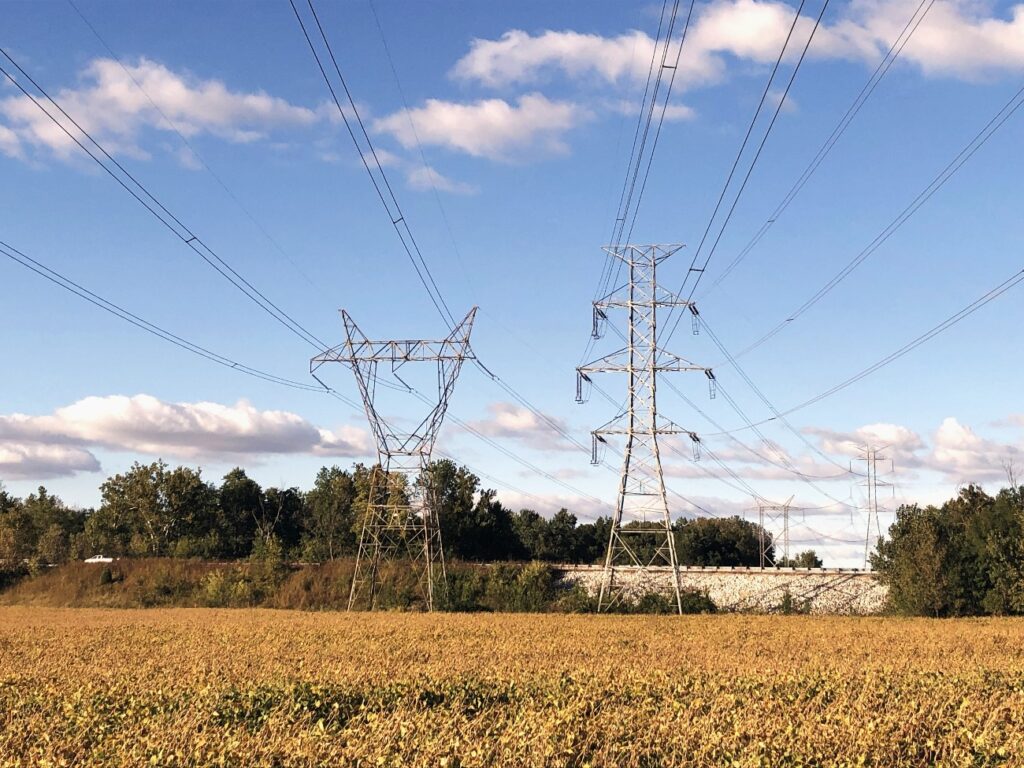A solar installation in Emery County, with PacifiCorp’s Hunter coal-fired power plant in the background, is pictured on Wednesday, July 31, 2024. (Photo by Spenser Heaps for Utah News Dispatch)
Planet-warming carbon dioxide pollution could dramatically drop in the West if a dozen electrical energy transmission projects currently proposed or being built are completed in the next five years, a new report found.
It said that the 12 projects – adding 3,000 miles of new energy transmission across 14 states – could reduce carbon dioxide emissions from electricity in the region by 73% compared with 2005 levels once complete. This is because the expanded grid would spur the development of renewable energy projects powered by wind and solar. The findings, published Sept. 13, come from researchers at the U.S.Department of Energy’s Pacific Northwest National Laboratory.
The greatest percentage of emission reduction, the report found, would come from the central Western states — including Utah, Nevada, Wyoming, Colorado, Arizona and New Mexico — as renewable energy options replace thermal fossil power generation.
New Utah solar energy park, one of the largest in the U.S., could power 88,000 homes
But expansion of the region’s energy and transmission is lagging, according to officials at the Western Electricity Coordinating Council, a nonprofit organization based in Salt Lake City that ensures grid connection and reliability in the West. By the end of last year, about half of the new energy and transmission projects anticipated for the West had been completed. This was due in large part to supply chain issues, prices and labor shortages, according to Branden Sudduth, the commission’s vice president of reliability planning.
If the 700,000-mile grid – called the Western Interconnection – is expanded with completion of the projects, researchers at the U.S. Department of Energy estimate that about 15% of the energy currently generated for the grid from coal and natural gas could be replaced with new wind and solar energy energy.
The report found that adding more wind and solar power to the grid would bring savings, too, by reducing Western generation costs by about a third.
With added wind and solar energy and expanded transmission lines in the Southwest and Wyoming, California’s demand for Northwest hydropower would drop by more than 25%, the researchers found.
The potential resilience of this future grid to extreme weather and demand was also analyzed. The researchers found that expanding the grid and adding lines across more areas and installing sophisticated batteries would allow the system to withstand multiple challenges, such as higher demand in extreme weather.
“The Western Interconnection can be operated reliably and affordably with a high penetration of renewables,” researchers wrote.
Oregon Capital Chronicle is part of States Newsroom, a nonprofit news network supported by grants and a coalition of donors as a 501c(3) public charity. Oregon Capital Chronicle maintains editorial independence. Contact Editor Lynne Terry for questions: info@oregoncapitalchronicle.com. Follow Oregon Capital Chronicle on Facebook and X.
GET THE MORNING HEADLINES.

